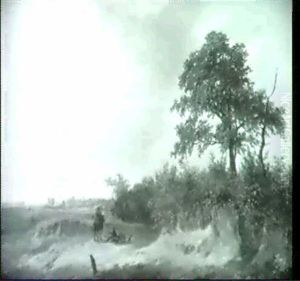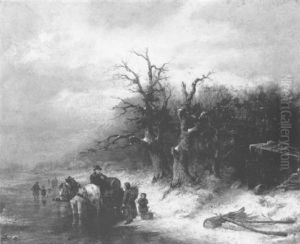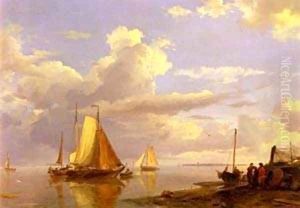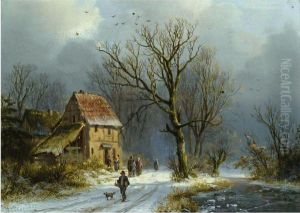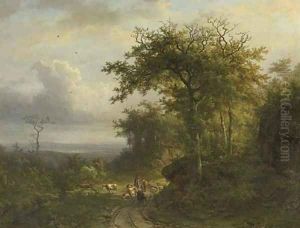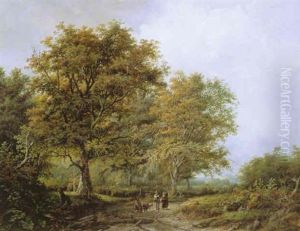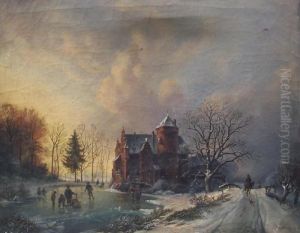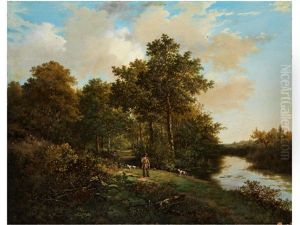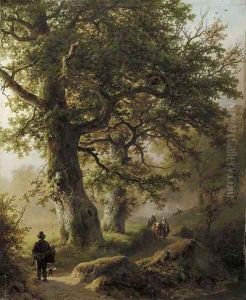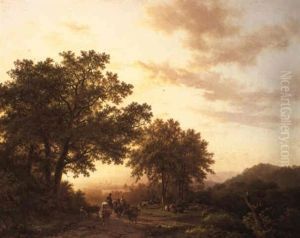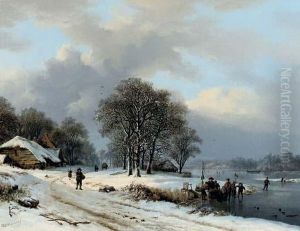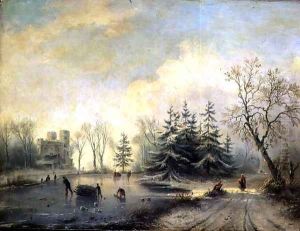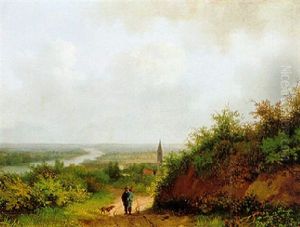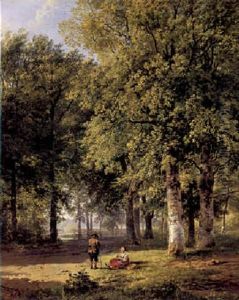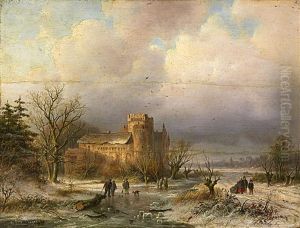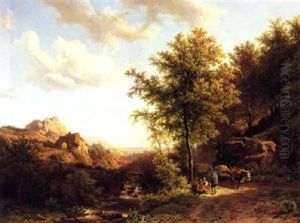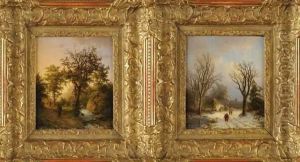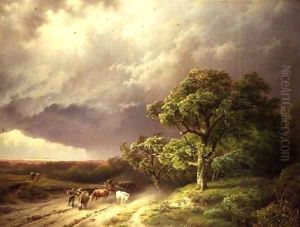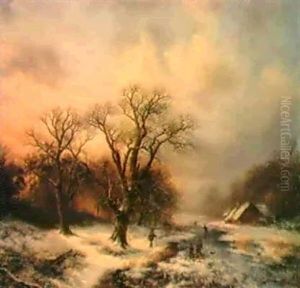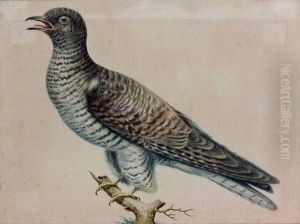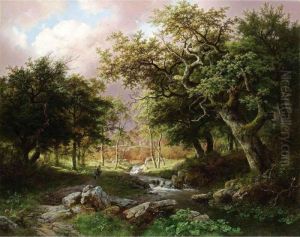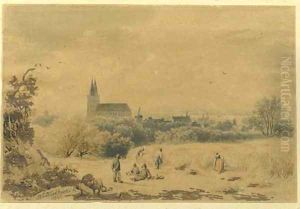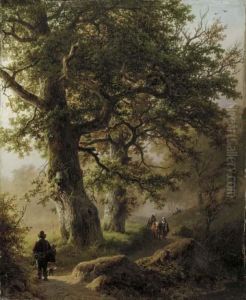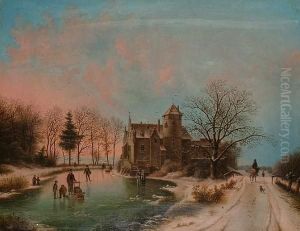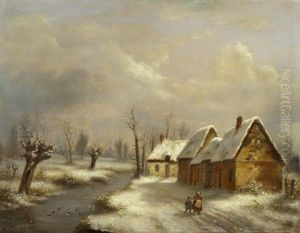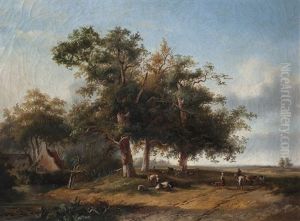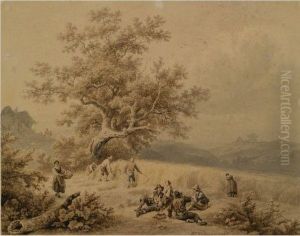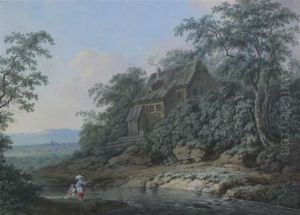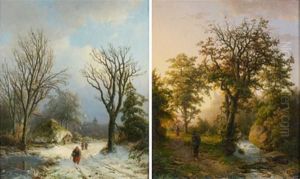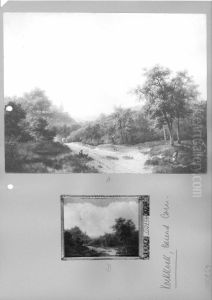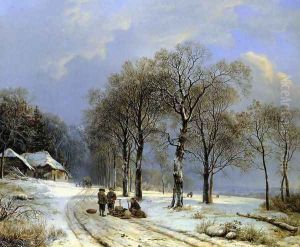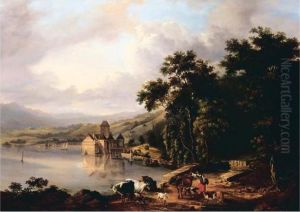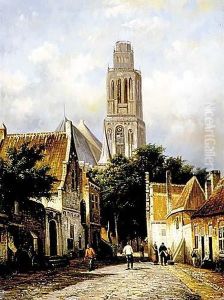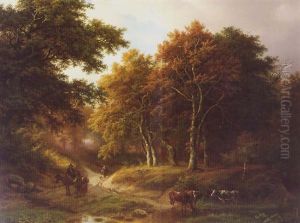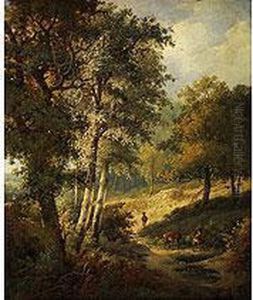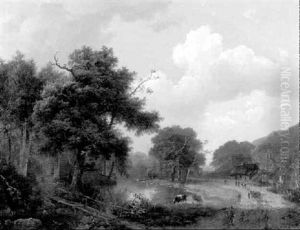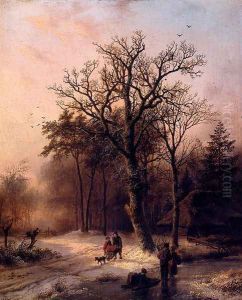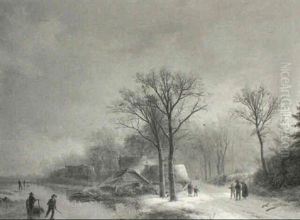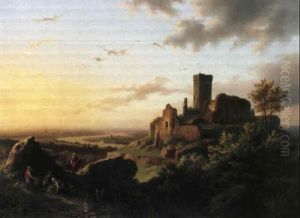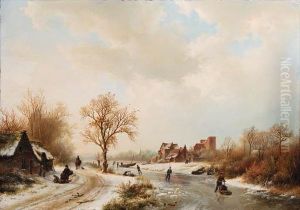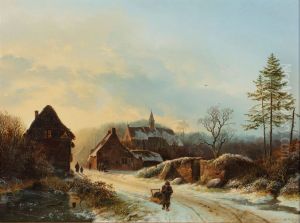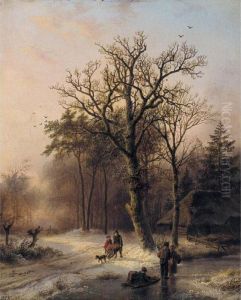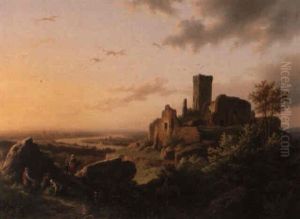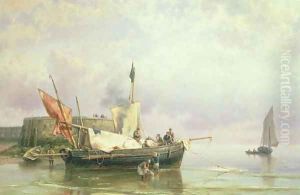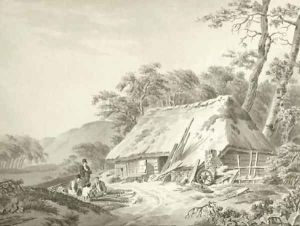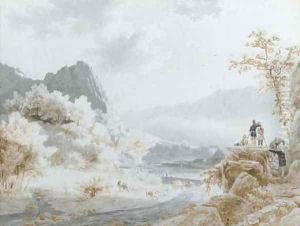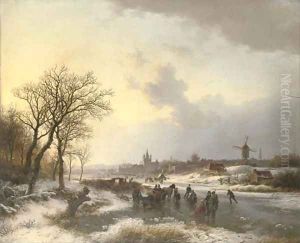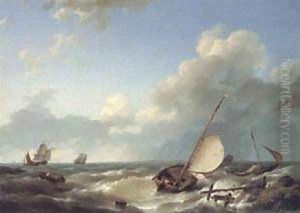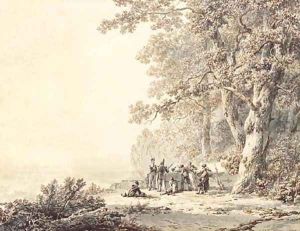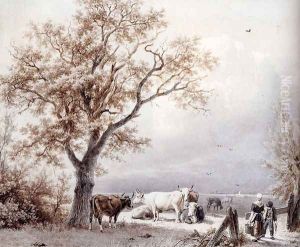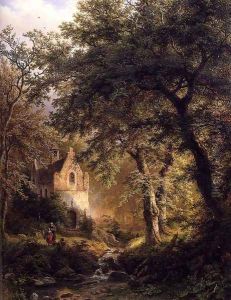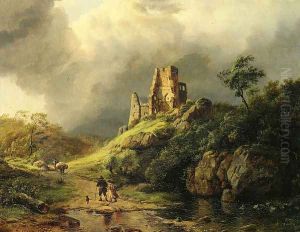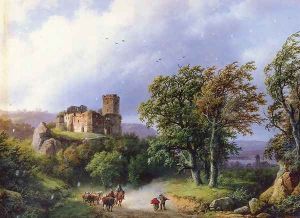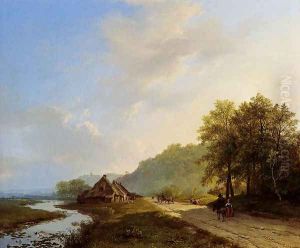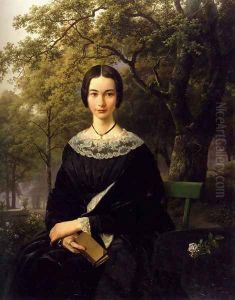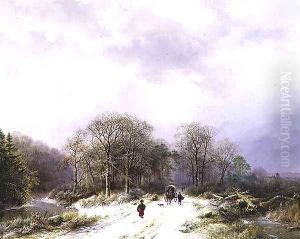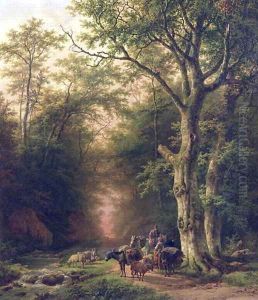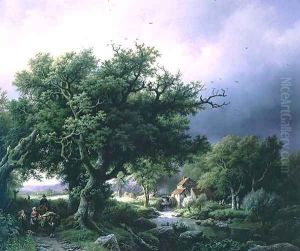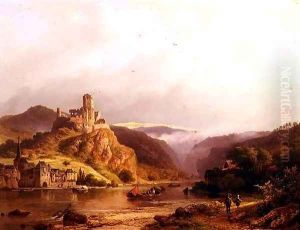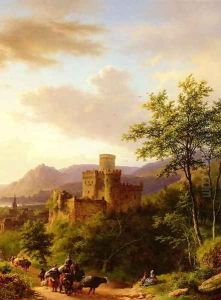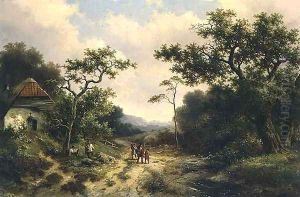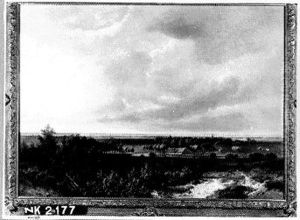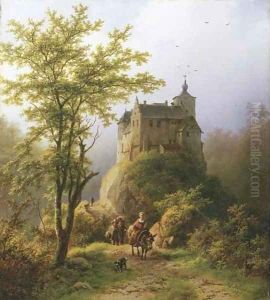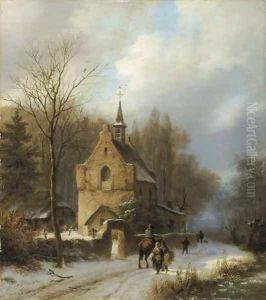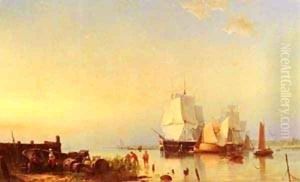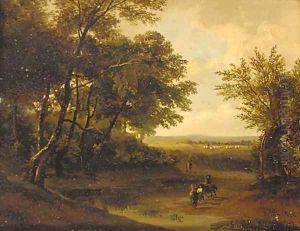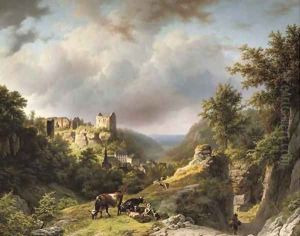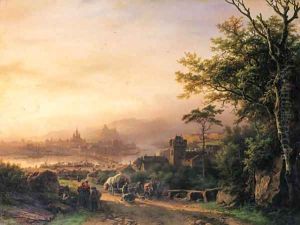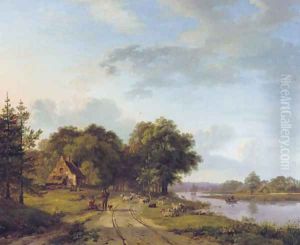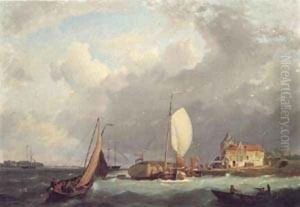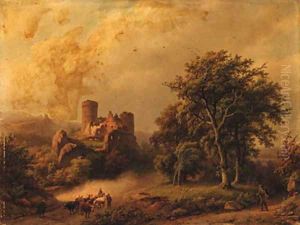Barend Cornelis Koekkoek Paintings
Barend Cornelis Koekkoek was a Dutch landscape painter born on October 11, 1803, in Middelburg, Netherlands. He is often referred to as the 'Prince of Landscape Painting' and is renowned for his romantic and highly detailed depictions of the Dutch and German countryside. Koekkoek stemmed from a family of artists; his father, Johannes Hermanus Koekkoek, was a marine painter, and his brothers and descendants continued the artistic tradition.
Koekkoek's early education was under his father's tutelage before he attended the Academy of Fine Arts in Amsterdam. There, he studied under the landscape painter Jean Augustin Daiwaille, who would later become his father-in-law. Koekkoek's early work was greatly influenced by the 17th-century Dutch landscape painters, such as Jacob van Ruisdael and Meindert Hobbema, whose works he emulated in terms of composition and mood.
In 1826, Koekkoek moved to Hilversum and later to Amsterdam, where he established his reputation as a landscape artist. His work quickly gained popularity, and in 1834, he was awarded a gold medal by the Felix Meritis Society for his painting 'Winter Landscape.' In 1837, he moved to Cleves (Kleve), a town in Germany, where the picturesque landscape served as a constant source of inspiration for his paintings. The romantic Rhine region, with its hills, forests, and rivers, became the subject of many of his masterpieces.
Koekkoek's paintings are characterized by their meticulous attention to detail, rich color palette, and the serene, idyllic quality they exude. He had an exceptional ability to capture the changing seasons and the various times of day, creating atmospheric and evocative scenes that appealed to the bourgeois clientele of the time. Koekkoek also opened an academy in Cleves where he taught many students, spreading his influence on landscape painting.
Throughout his career, Koekkoek exhibited his work in Amsterdam, The Hague, and Germany, receiving numerous awards and honors. His work became highly sought after, not only in the Netherlands and Germany but also in England and Russia. Koekkoek died on April 5, 1862, in Cleves, but his legacy lived on through his students and the Koekkoek Museum in Cleves, which is dedicated to his work and the work of the Koekkoek family of artists.
